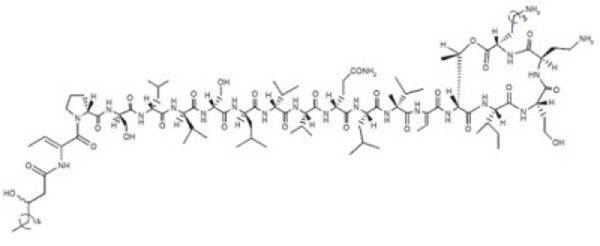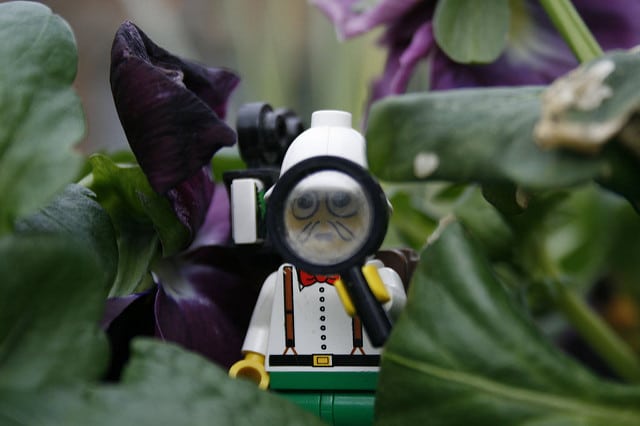A Spot of History
Most of the biomedical methods used started as a curiosity. Then the one-off gains a limited use, the technology then progresses until its use becomes widespread. Just think about the arch from the curious polished glass spheres, used by Antony Levnhook to look at animalcules, to modern microscopes.
The same story of method development happened to the use of dried blood samples (DBS). Ivar Bang proposed to use the dried blood samples in 1913 and the method principle remains the same a hundred years later. Droplets of blood obtained by a scalpel prick from fingertip blotted and on filter paper are air-dried and later reconstituted for the analysis. [1]
Only 50 years later, an American microbiologist, Robert Guthrie, introduced DBS as a screening technique, but its use was limited for the screening of metabolic diseases in infants. However, with the increased sensitivity of mass-spectrometry, which only requires a small number of analytes, dried samples are used more often and more widely.
In this article, we discuss how dried blood samples are prepared, as well as the advantages and disadvantages compared with wet blood samples, so you can decide if dried blood samples might benefit you in your research.
Factors Affecting Dried Blood Samples
Currently, DBS are collected on cotton filter paper or glass microfiber paper that does not soak up reagents. The spots are air-dried – a critical step because bacteria can colonize damp spots. The blotted paper is placed into plastic bags and transported for analysis. [2]
Of course, the results from dried blood sampling must be reproducible irrespective of the days they were taken on. The reproducibility depends on the internal and external parameters. The most crucial external parameter is the hematocrit level (the percentage of red blood cells by volume in the blood) that will determine the concentration of many analytes. Homogeneity of the sample and degree of hemolysis will also affect the reproducibility.
External parameters include the anticoagulant type used, the homogeneity of the samples, and humidity during preparation. Once chosen, the protocol should be followed as precisely as practically possible.
Advantages of Dried Blood Sampling
So why you would even consider using DBS? The method that survived 100 years has definite advantages. If you name a blood analysis, it can probably be done on dried blood samples.
Most information gleaned from wet blood samples are compatible with dried samples. DBS allows testing of various biological molecules such as nucleic acids, proteins, lipids, or small organic and non-organic molecules. Considering the relative ease and speed of collection as well as the low volume of blood required, DBS is suitable for initial screening of a large number of samples, rather than in-depth analysis.
Examples of the types of studies where DBS is used successfully are widespread, from the genetic and clinical diagnostic screening of newborns, field-testing for infectious diseases and forensics to the epidemiological field. As a part of these studies, it is possible to detect metabolic markers, do hematological tests, toxicological and therapeutic drug analysis, LC-MS, immunochemistry, RT-PCR, and sequencing.
The number of potential analytes and methods for their detection are not the only advantages of DBS. Consider also:
- Ease of sampling and handling. Unlike collecting wet samples, dried blood collection does not require the involvement of a trained phlebotomist. Dried samples are obtained from a lancet prick to the finger (heel in the case of infants), so collecting them is less invasive and time-consuming than collecting whole blood from a vein.
- Ease of transportation and storage. Because dried blood is stable at room temperature, no cold storage or buffering is required.
- Long-term sample stability. Once dried, the sample is stable for months to years at ambient temperature or under refrigeration. [2]
- Possibility of automatization. The samples can be separated in the laboratory using automatic hole punchers. Placing the punched-out discs into 96-well plates allows automatic processing. [3]
Challenges and Limitations of Dried Blood Sampling
However, as with any small sample methods, using dried samples provides challenges:
- Potential for contamination. Whole blood is collected directly from a virtually sterile organism to sterile vessels, so there is a little chance of contamination. DBS is air-dried in non-sterile conditions, so there is a chance of bacterial and fungal spore contamination from the air.
- Unsuitable for whole-cell analysis. This is because blood cells lose their shape during drying. Morphology of cells is best studied using hematology microscopes and fresh blood samples.
- Issues with reproducibility. A low sample volume (30 – 100 µL per spot) has reproducibility issues. The concentration of analytes is more variable the lower the initial sample volume is (sample variability). Also, a small sample volume leads to difficulties in the reproducibility of assays (sample reproducibility).
Only highly abundant molecules will be sufficient for quantification, and even moderately abundant molecules may be below the detection threshold. Sample variability and reproducibility concerns mean that if you are studying low abundance molecules, precise quantification is essential or you want to perform multiple analyses on one sample, you shouldn’t switch to dried samples.
However, a variety of pre-treatments [1] and recovery [4] methods are available that improve the reproducibility of the dried blood sampling.
What’s Needed to Increase the Application of Dried Blood Sampling
Given the advantages of DBS in comparison with whole blood samples, it is advisable to try using DBS in your research. You can start from the researching comparability between DBS and the serum values. There are products on the market that increase the reproducibility of the DBS sampling, such as microsamplers.
Do you use wet blood samples currently? Would you consider the switch to dried? Either way, let us know in the comments below.
Sources:
- Zakaria R. et al. Advantages and Challenges of Dried Blood Spot Analysis by Mass Spectrometry Across the Total Testing Process. EJIFCC. 2016;27(4): 288–317. PMID: 28149263
- Lehmann S. et al. Current and future use of “dried blood spot” analyses in clinical chemistry. Clin Chem Lab Med 2013; 51(10): 1897–1909. DOI: 10.1515/cclm-2013-0228
- Gupta K. and Mahajan P. Applications and Diagnostic Potential of Dried Blood Spots. Int J Appl Basic Med Res. 2018; 8(1): 1–2. DOI: 10.4103/ijabmr.IJABMR_7_18
- Lee Y.R., Lee J, Kang H.G. Presoaking dried blood spot with water improves efficiency for small-molecule analysis. Biotechniques. 2019 ;67(5):219-228. DOI: 10.2144/btn-2019-0043.






